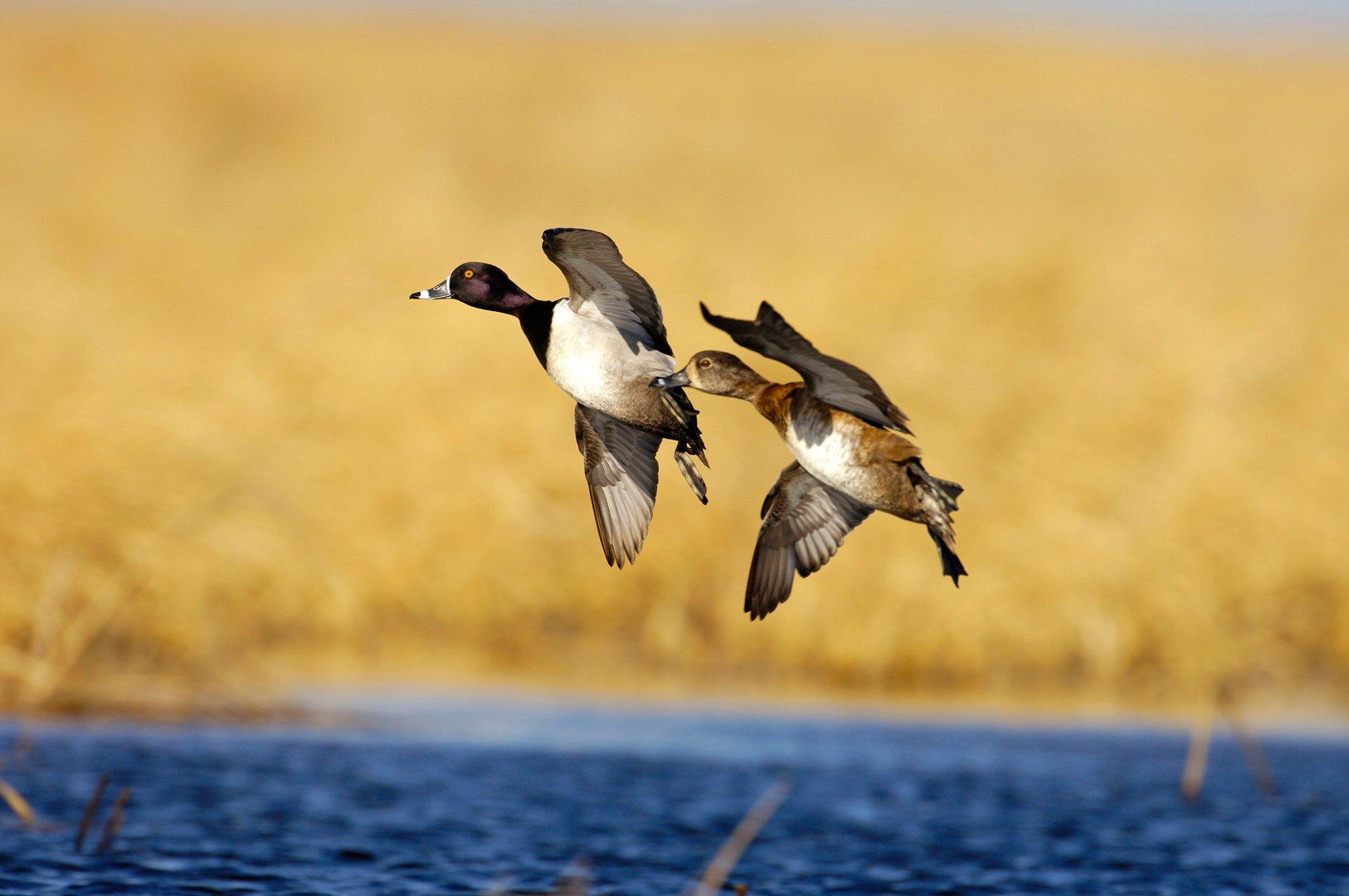Marked Birds Head North in Anticipation of Nesting Season
Ring-necked ducks in Delta Waterfowl's groundbreaking research project have started their northward journey toward the breeding grounds.
During the March 7 through 17 reporting period, 31 ducks had begun spring migrations, according to an online update. The first started north in late February, and 21 more headed north in March.
Three migrating ringnecks marked in South Carolina stayed in the Atlantic Flyway. Duck 177175 entered North Carolina and then flew to New York. No. 177176 continued to hang out in northern New Jersey, and 182669 embarked on a short flight to North Carolina.
Twenty-eight ringbills originating from the Red Hills of southern Georgia and northern Florida pushed north. Two headed up the Atlantic Flyway. PVW moved to South Carolina, and No. 182682 made it to northern Virginia. The rest crossed into the Mississippi Flyway. The northernmost hen, Arden, flew 1,000 miles to Lake Ontario on March 14, and then flew farther into Ontario to Lake Scugog on March 16.
The rest of the Red Hills migrants were spread throughout the flyway, with ducks in Wisconsin, Illinois, Indiana, Michigan, Ohio, Tennessee and Kentucky. Ten ringnecks were mapped in Indiana, and three more used Lake Erie as a stopover.
Although not all other marked ducks transmitted data during the reporting period, seven Red Hills ringnecks remained on the wintering grounds. Three are still wintering in South Carolina.
Beginning Nov. 28, 2018, Delta Waterfowl and its research partners inserted transmitters in 61 ringnecks — 30 originating in South Carolina and 31 more in southern Georgia and northern Florida. This season's study, the second in a two-year effort, includes two drakes. In November 2017, Delta implanted radios in 15 ringneck hens in the same area of Georgia and Florida. The transmitters let Dr. Mark McConnell and graduate assistant Tori Mezebish, of the University of Georgia, track movements of the hens at their wintering grounds and allowed them to follow the ducks' spring migration to Canadian breeding grounds before the transmitter batteries expired.
The study, conducted cooperatively by Delta and the University of Georgia, is exciting for several reasons. Ringnecks have been studied far less than any of the most harvested duck species. Further, they are expanding in numbers and range, so the study marks one of the first times researchers can study a duck species on the upswing. In addition, this is the first time researchers have implanted radio transmitters in ringnecks to study their movements. Banding data for the species is lacking, so biologists know relatively little about the birds' migration routes or breeding destinations.
Click here for more Realtree waterfowl hunting content. And check us out on Facebook.








